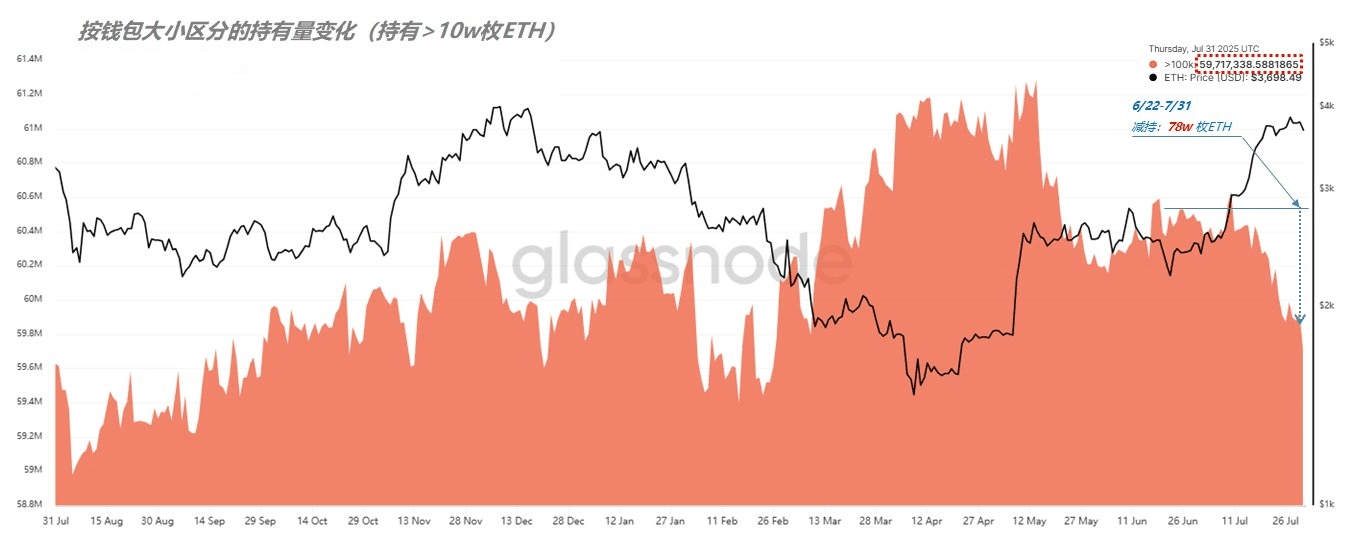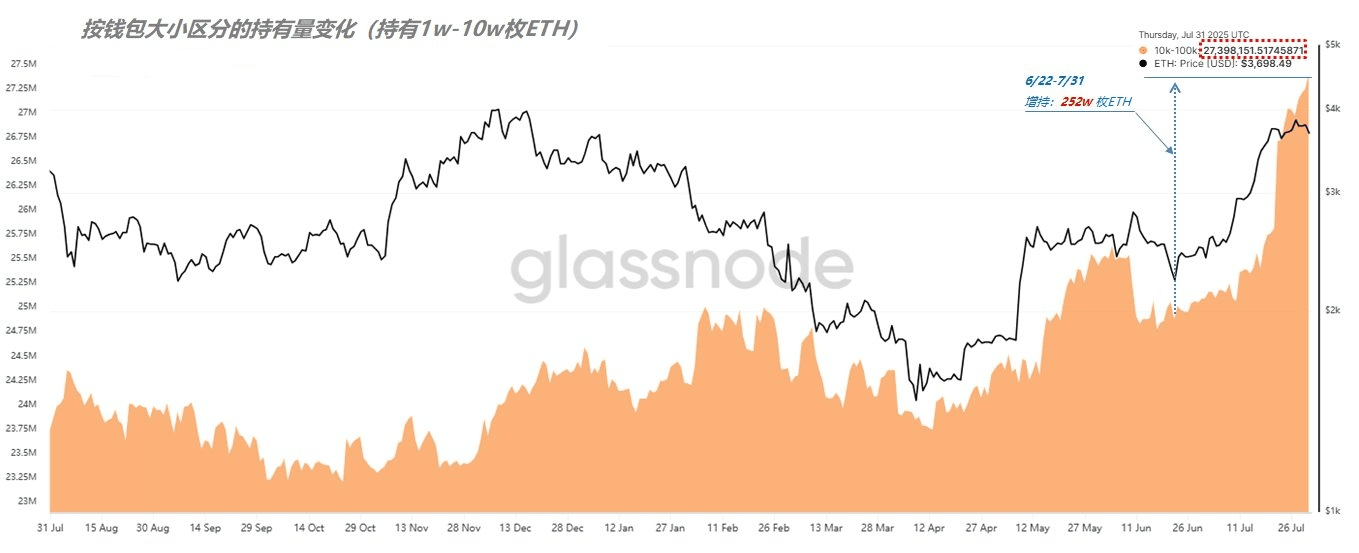In the market ecology of Ethereum, a silent game is unfolding. The divergence among the super whale groups has not changed Ethereum's relatively stagnant performance in this cycle, but it further confirms the acceleration of its 'de-retailization' process. The current pattern of chip control in the market is already clear: Group A, holding more than 100,000 ETH, has a total holding of 59.72 million ETH; Group B, holding between 10,000 and 100,000 ETH, has a total holding of 27.4 million ETH. These two groups occupy 73% of the circulating chips, becoming the key force that influences the price trend of ETH. The future price direction and trend momentum of ETH will obviously be dominated by the actions and attitudes of these whale groups.
Observing the operational path of Group A, their grasp of price nodes is quite characteristic: in February of this year, when the ETH price dipped near $1800, this group chose to increase their holdings, significantly pushing up their holding amount; when the ETH price rose to $2600 in May, they shifted to reducing their holdings. According to statistics, from June 22 to July 31, Group A cumulatively reduced its holdings by 780,000 ETH.

(Figure 1)
The behavior of the same group's reduction in holdings has produced significantly different market impacts at different times. The reduction in May caused the ETH price to encounter resistance at the $2800 mark, which it struggled to break through for a long time; however, the reductions since July have had very limited disturbances on the price. Behind this difference is the strong intervention of Group B.
Data shows that from June 22 to July 31, Group B cumulatively increased its holdings by 2.52 million ETH, not only absorbing all the chips reduced by Group A but also taking in the shares sold by small and medium retail investors. Clearly, amidst the divergence of super whales, the receiving side has demonstrated stronger strength.

(Figure 2)
From the composition of the groups, Group A may mainly consist of early market participants, while Group B may represent emerging institutional forces. This transfer of chips is essentially a change in market discourse power, often referred to as 'changing the dealer.' Whichever side has the upper hand, the price will gravitate towards its expected direction.
It is worth noting that as the influence of retail investors on Bitcoin declines, their participation in the Ethereum market is also continuously decreasing, and Ethereum is gradually entering an era dominated by large funds.